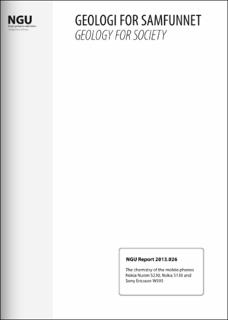| dc.description.abstract | The chemical composition of one smart phone and two mobile phones including their Li-batteries was analyzed by instrumental neutron activation analysis (INAA), infrared spectroscopy, fusion specific ion selective electrode, thermal conductivity, inductively coupled plasma optical emission spectroscopy (ICP-OES) and inductively coupled plasma mass spectrometry (ICP-MS).Because the applied analytical methods require the introduction of dilute solutions, the mobile phones and batteries were crushed and partially powdered by electronic fragmentation carried out by the SELFRAG laboratories. However, the electronic fragmentation gave only partially satisfying results. The disadvantages were the loss of light components in particular plastic and crystalline graphite and the large particle size of large single-material components such as the plastic body, screen and metal frame. Because of the weight loss, the provided concentration of light elements, including C, S, P, Cl, F, B, and Li, have large errors. | |

